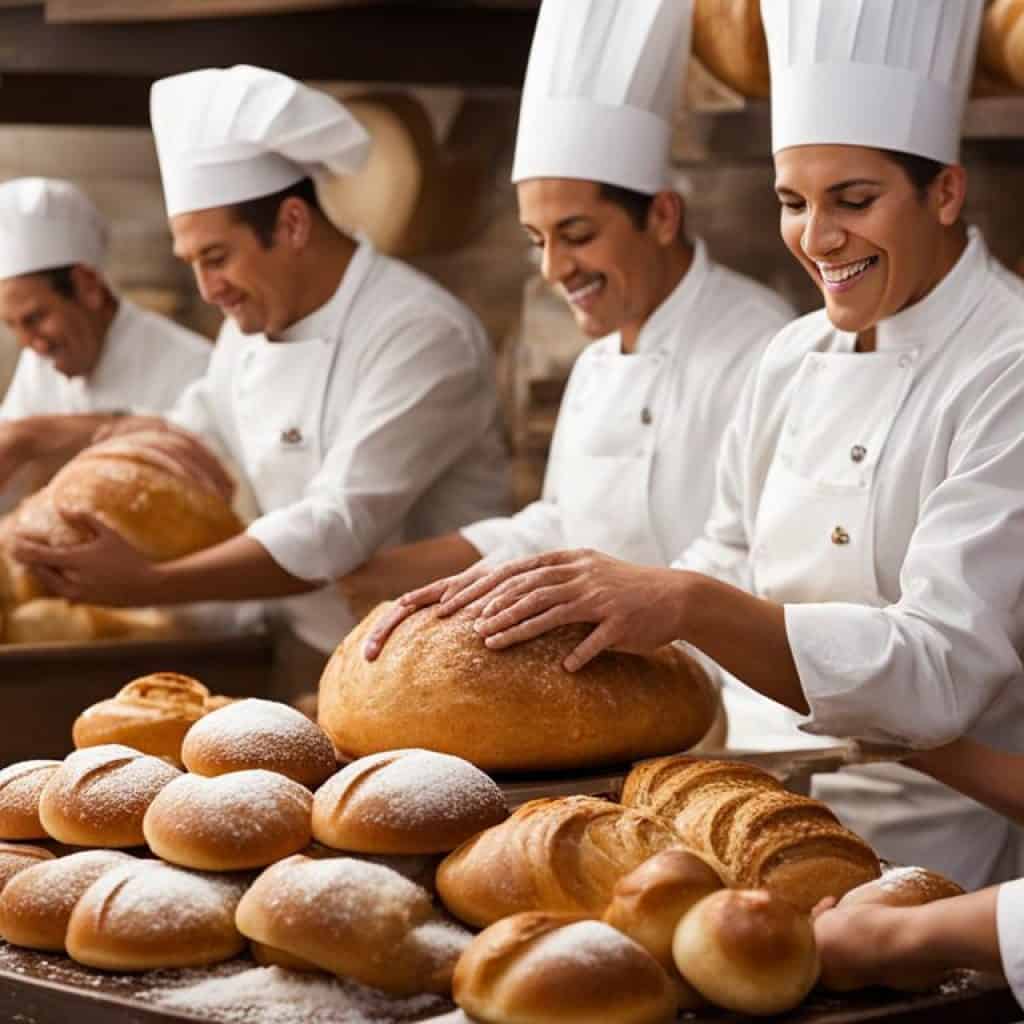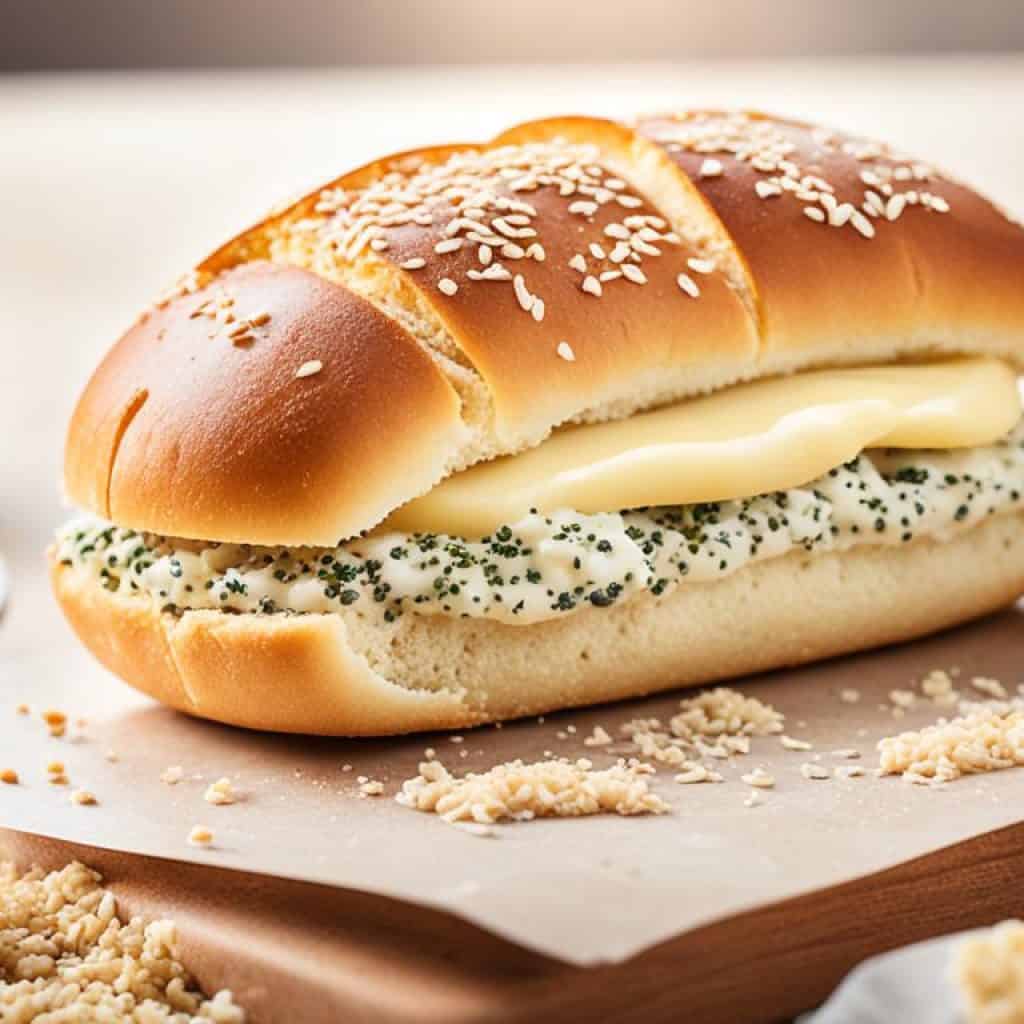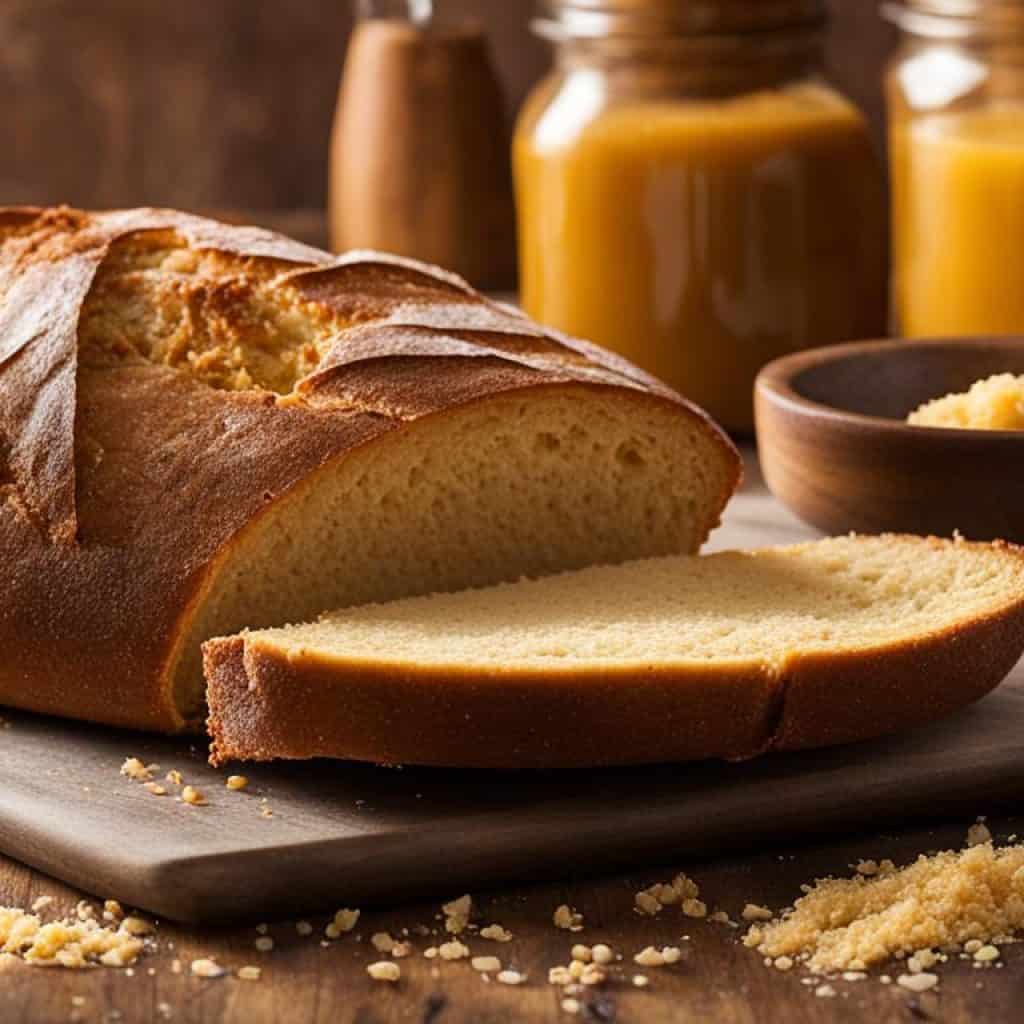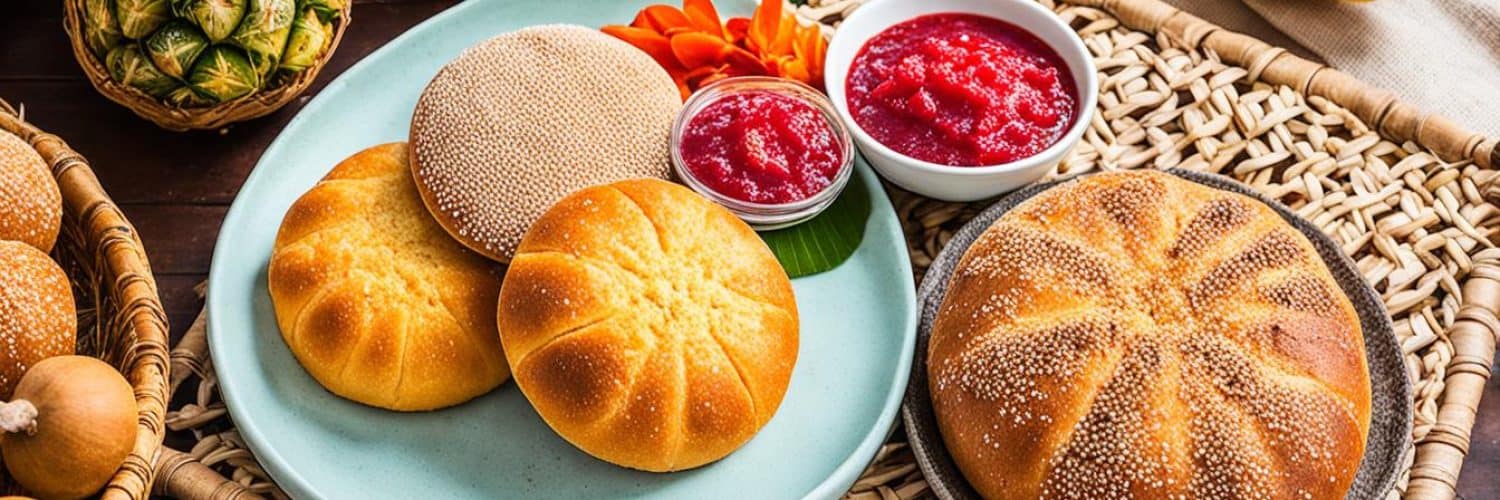When you think of Filipino cuisine, what comes to mind? Adobo? Sinigang? While these dishes are undeniably delicious, there’s another culinary gem in the Philippines that deserves recognition: bread. Yes, bread! In this article, we’ll take you on a mouthwatering journey through the world of Filipino bread, exploring its rich history, iconic varieties like the beloved pan de sal, and the passionate bakers behind these delectable treats. Get ready to indulge in the flavors of Bread in the Philippines!
- Discover the traditional Filipino breakfast favorite, pan de sal.
- Learn about the origins of pan de sal and its cultural significance in the Philippines.
- Explore how pan de sal has evolved from a traditional staple to modern interpretations.
- Meet passionate Filipino bakers who are shaping the bread culture in the Philippines.
- Embrace the flavors and celebrate the rich culinary heritage of Filipino bread.
The Origins of Pan de Sal: A Traditional Filipino Breakfast
Pan de sal, also spelled as pandesal, is considered the quintessential Filipino bread. It originated during Spanish colonization and has become a beloved part of Filipino breakfasts. The dough for pan de sal is rolled in breadcrumbs and has a distinctive shape reminiscent of coffee beans. Traditionally, it is baked in wood-fired brick ovens called pugons. Pan de sal has a thin, crispy crust and a light, airy texture. It is often enjoyed plain or filled with various flavors, such as ube (purple yam) or adobo (a popular stew). Many local bakeries in Manila offer the best pan de sal in the city. You can even try making your own homemade pan de sal using authentic recipes.
Evolution of Pan de Sal: From Traditional to Modern
Throughout the years, pan de sal in the Philippines has undergone a remarkable evolution, transforming from a simple morning staple into a diverse culinary delight. Today, you can find an array of pan de sal varieties with flavors and fillings that cater to a wide range of preferences. From the traditional favorites like ube (purple yam) and malunggay (moringa) to the innovative combinations of adobo and corned beef, Filipino bakers continuously push the boundaries of creativity.
Artisan breadmakers in the Philippines have also been instrumental in the evolution of pan de sal. These skilled bakers incorporate local ingredients and flavors, resulting in unique and tantalizing creations. Their commitment to craftsmanship and attention to detail have elevated pan de sal to an artisanal level, where each bite becomes a delightful experience.
One of the exciting developments in the bread industry is the introduction of bread delivery services. These services provide the convenience of enjoying freshly baked bread delivered right to your doorstep. Whether you crave the warm and comforting taste of traditional pan de sal or the innovative flavors of artisan bread, the delivery service ensures that you can savor these delectable treats without leaving your home.
The bread culture in the Philippines continues to flourish, propelled by the creativity and innovation of Filipino bakers. They are constantly inspired by their rich culinary heritage and are driven to create bread varieties that capture the hearts and palates of people worldwide. The evolution of pan de sal reflects the dynamic nature of Filipino cuisine, where traditional flavors meet modern ingenuity.
The Passionate Bakers Behind Filipino Bread
Filipino bakers have a deep passion for their craft and take pride in creating delicious bread. They are the backbone of the vibrant bread culture in the Philippines, infusing their creations with flavors that bring people together. Let’s meet some of the passionate Filipino bread bakers who are making a mark in the industry.
Gretchen Lim – Founder of Manilabake
Gretchen Lim, the founder of Manilabake, is a renowned name in the bread industry. Her dedication to using quality ingredients and commitment to innovation has earned her a loyal following. With each batch of bread she bakes, Gretchen pours her heart and soul into creating flavors that delight the taste buds.
“Baking bread is an artform that allows me to express my creativity and connect with people. I believe that the love and passion I put into my products come through with every bite.”
With a focus on traditional Filipino bread, Gretchen infuses her creations with Filipino flavors and techniques, offering a taste of nostalgia to her customers. Her dedication to perfection and unwavering commitment to her craft has made Manilabake a staple in the Filipino bread scene.
Jay Matic – Founder of Manila Artisan Breads
Jay Matic, the founder of Manila Artisan Breads based in Birmingham, England, has taken his love for Filipino flavors and combined it with his expertise in artisan bread-making. His journey in the world of bread has been remarkable, as he aims to bring a taste of his Filipino heritage to a global audience.
“Bread is a universal language that transcends borders. I wanted to showcase the immense flavors of Filipino bread to the world while incorporating artisan techniques.”
Using local ingredients and traditional Filipino recipes, Jay creates an array of bread varieties that showcase the rich cultural heritage of the Philippines. Through his dedication to his craft, Jay shares the flavors of the Philippines, one loaf at a time.

The passion and creativity of bakers like Gretchen Lim and Jay Matic are a true testament to the bread culture in the Philippines. Their commitment to their craft and innovation in flavors continue to shape the industry, resulting in delightful bread creations that bring joy and togetherness.
The Cultural Significance of Filipino Bread
Filipino bread holds a significant place in Filipino culture. It is not just about the flavors and ingredients but also about the connections and stories that these breads create.
Bread is a common presence in Filipino households, enjoyed by people of all ages. It is an essential part of celebrations, gatherings, and everyday life. From traditional pan de sal to modern interpretations, Filipino bread recipes showcase the rich culinary heritage of the Philippines and bring people together.
Pan de Sal: A Breakfast Champion
Pan de sal, the beloved Filipino breakfast bread, holds the title of being a breakfast champion in Filipino households. This soft and slightly sweet bread roll is a symbol of togetherness and comfort in the morning.
Whether enjoyed plain or filled with various spreads and fillings, pan de sal is versatile and satisfying. Its light and fluffy texture paired with a warm cup of coffee or hot chocolate creates the perfect breakfast experience.
This Filipino favorite is a staple in households across the country, bringing joy and familiarity to the breakfast table. Its gentle sweetness and softness appeal to Filipinos from all walks of life, making it the ultimate breakfast champion.
Why Pan de Sal is a Breakfast Favorite
Pan de sal’s popularity for breakfast is rooted in its comforting flavors and cultural significance. It is not just a simple bread roll; it represents the essence of Filipino family values and togetherness.
“Pan de sal is our daily ritual, the bread that brings families together every morning. It’s more than just food; it’s the taste of Filipino love.” – Maria Santos, a Filipino home cook
From the crackling sound of the crust to the softness of the bread’s center, every bite of pan de sal is a delightful experience. Its versatility also allows for endless possibilities, such as enjoying it with butter, cheese, peanut butter, or even as a sandwich with various fillings.
The Perfect Pan de Sal Recipe
For those who want to recreate the magic of pan de sal at home, here’s a simple recipe to try:
| Ingredients | Quantity |
|---|---|
| All-purpose flour | 4 cups |
| Yeast | 2 1/4 teaspoons |
| Sugar | 1/4 cup |
| Salt | 1 teaspoon |
| Warm water | 1 1/2 cups |
| Breadcrumbs | 1/2 cup |
Note: This is a basic recipe; you can experiment with different flavors and fillings based on your preference.
- In a large mixing bowl, dissolve the yeast and sugar in warm water. Let it sit for about 5 minutes or until it becomes frothy.
- Add the salt and gradually mix in the flour until a dough forms.
- Knead the dough on a floured surface for about 10 minutes or until it becomes smooth and elastic.
- Place the dough in a greased bowl and cover it with a damp cloth. Let it rise in a warm place for about 1 to 2 hours or until doubled in size.
- Preheat the oven to 375°F (190°C) and line a baking sheet with parchment paper.
- Punch down the dough and divide it into equal-sized portions. Shape each portion into a roll and roll it in breadcrumbs.
- Place the rolls on the prepared baking sheet, leaving space between each roll. Let them rise for another 30 minutes.
- Bake the rolls for 15 to 20 minutes or until they turn golden brown.
- Remove from the oven and let them cool on a wire rack.
- Enjoy your homemade pan de sal with your favorite spreads or fillings.
With this simple recipe, you can bring the deliciousness of pan de sal into your own kitchen and savor the flavors of a Filipino breakfast staple.
The Classic Combination: Pandesal and Kesong Puti
One classic combination with pan de sal is a Pandesal sandwich filled with Kesong Puti, a Filipino cheese made from carabao’s milk. This soft and slightly salty cheese complements the sweetness of the pan de sal perfectly. The combination of Pandesal and Kesong Puti is often enjoyed during merienda, a snack time in the Philippines. It is a simple yet satisfying treat that brings joy with every bite.
With its irresistible flavors and contrasting textures, the Pandesal and Kesong Puti sandwich is a popular choice among Filipinos, whether as a quick snack or a light meal. This delightful combination showcases the harmony of Filipino ingredients, creating a harmonious blend of savory and sweet.
Kesong Puti, also known as white cheese, is a locally produced Filipino cheese that is made from carabao’s milk. Its creamy and slightly tangy taste pairs wonderfully with the soft and fluffy pan de sal. This classic pairing has been enjoyed for generations, providing a wholesome and satisfying snack option for Filipinos of all ages.
“The Kesong Puti adds a delightful creaminess to the Pandesal sandwich, balancing out the flavors and creating a harmonious taste sensation,” says Chef Anna Santos, a renowned expert in Filipino cuisine. “The combination of a soft and slightly sweet bread with the richness of Kesong Puti is a match made in heaven.”
Whether enjoyed as a quick bite on the go, a snack during merienda, or a light lunch, the Pandesal and Kesong Puti sandwich is a beloved staple in Filipino cuisine. It represents the simplicity and versatility of Filipino flavors, elevating everyday bread into a delightful culinary experience.
Try this simple recipe for a Pandesal and Kesong Puti sandwich:
- Split a freshly baked pan de sal in half.
- Spread a generous amount of Kesong Puti on one side of the pan de sal.
- Top with your favorite condiments and fillings, such as sliced tomatoes, cucumber, or lettuce.
- Close the sandwich and press gently to secure the filling.
- Enjoy your Pandesal and Kesong Puti sandwich as a tasty and satisfying snack!
With just a few simple steps, you can create a delicious Pandesal and Kesong Puti sandwich that highlights the flavors of Filipino cheese and bread. Grab a pan de sal, get some Kesong Puti, and treat yourself to this classic combination that celebrates the best of Filipino cuisine.
| Ingredients | Quantity |
|---|---|
| Pan de sal | 2 pieces |
| Kesong Puti | As needed |
| Sliced tomatoes | 2 pieces |
| Cucumber slices | As needed |
| Lettuce | As needed |
“The Pandesal and Kesong Puti sandwich is a wonderful combination of flavors and textures,” says Chef Santos. “It’s a simple yet tasty snack that perfectly represents the rich culinary heritage of the Philippines.”
So, whether you’re lounging at home, exploring the vibrant streets of Manila, or enjoying a picnic in a lush park, don’t forget to indulge in the classic combination of Pandesal and Kesong Puti. It’s a delightful treat that will satisfy your cravings and transport you to the heart of Filipino cuisine.

The Sweet Filling: Pan de Coco
Pan de coco is a popular Filipino bread roll filled with a sweet and fragrant coconut filling. The soft and fluffy bread pairs perfectly with the sweetness of the coconut filling. It is a delightful treat that can be enjoyed plain or toasted with butter, jam, or Nutella. The flavors and textures of pan de coco make it a beloved choice for Filipinos seeking a sweet indulgence.
How to Make Pan de Coco
Here’s a simple recipe to make your own pan de coco at home:
“Pan de coco is a delicious treat that can be enjoyed at any time of the day. With its soft and fluffy texture and sweet coconut filling, it’s no wonder why Filipinos love this bread so much. Whether you’re a skilled baker or just starting out, making pan de coco is a fun and rewarding experience. Here’s a step-by-step guide to help you create this delightful Filipino bread:
- Start by preparing the dough. In a large mixing bowl, combine 2 cups of all-purpose flour, 1/4 cup of sugar, 2 teaspoons of instant yeast, and 1/2 teaspoon of salt.
- In a separate bowl, whisk together 1/2 cup of warm water, 1/4 cup of coconut milk, and 2 tablespoons of vegetable oil. Add the wet ingredients to the dry ingredients and mix until a soft dough forms.
- Knead the dough on a lightly floured surface for about 5-7 minutes, or until it becomes smooth and elastic.
- Place the dough in a greased bowl, cover it with a clean kitchen towel, and let it rise in a warm place for about 1-2 hours, or until it doubles in size.
- While the dough is rising, prepare the coconut filling. In a saucepan, combine 1 cup of grated coconut, 1/2 cup of brown sugar, and 1/4 cup of water. Cook over medium heat, stirring constantly, until the mixture thickens. Remove from heat and let it cool.
- Once the dough has doubled in size, punch it down to release the air. Divide the dough into small pieces and flatten each piece with your hands. Spoon a small amount of the coconut filling onto each dough piece and seal it by pinching the edges together.
- Place the filled dough pieces on a greased baking sheet and let them rest for another 30 minutes.
- Preheat your oven to 350°F (180°C).
- Bake the pan de coco in the preheated oven for 15-20 minutes, or until they turn golden brown.
- Remove from the oven and let the pan de coco cool before serving.
Enjoy your homemade pan de coco with a cup of hot coffee or tea for a truly satisfying treat!
| Pan de Coco Recipe | |
|---|---|
| Ingredients: |
|
| Instructions: |
|
The Sweet Embrace: Spanish Bread
If you’re looking for a truly indulgent treat, look no further than Spanish Bread. This Filipino sweet bread roll is a delightful combination of soft bread and a sugary, buttery filling. With every bite, you’ll experience a comforting and sweet embrace that will leave you wanting more.
Spanish Bread is a popular choice for merienda, the traditional Filipino afternoon snack, but it can also be enjoyed as a special breakfast treat. The softness of the bread, combined with the sweetness of the filling, creates an irresistible combination that satisfies any sweet tooth.
Despite its name, Spanish Bread has no direct connection to Spain. It is purely a Filipino creation, showcasing the ingenuity and creativity of Filipino bakers. This beloved bread roll is a testament to the vibrant and ever-evolving Filipino bread culture.
Get a taste of Spanish Bread and experience the joy it brings with every bite.

| Features of Spanish Bread | Taste | Texture | Filling |
|---|---|---|---|
| Sweet and indulgent | Buttery and slightly sweet | Soft and fluffy bread | Sugary and buttery filling |
Recipe Highlight: Pan de Sal
If you want to experience the taste of pan de sal at home, here’s a simple recipe that you can try. With just a few ingredients and some patience, you can enjoy freshly baked pan de sal in your own kitchen. The recipe involves blooming the yeast, mixing the dough, and letting it rise before baking the rolls to golden perfection. The aroma of freshly baked pan de sal will fill your home, creating a warm and inviting atmosphere.
Ingredients:
- 2 1/4 teaspoons active dry yeast
- 1 cup warm water (110°F)
- 3 cups all-purpose flour
- 3 tablespoons sugar
- 1 teaspoon salt
- 1/4 cup vegetable oil
- breadcrumbs (for rolling)
Instructions:
- In a small bowl, dissolve the yeast in warm water and let it sit for 5 minutes until frothy.
- In a large mixing bowl, combine the flour, sugar, salt, and vegetable oil. Gradually add the yeast mixture and mix until a dough forms.
- Knead the dough on a lightly floured surface for about 10 minutes, until smooth and elastic.
- Place the dough in a greased bowl, cover it with a clean cloth, and let it rise in a warm place for about 1 to 2 hours, or until doubled in size.
- Punch down the dough and divide it into small pieces. Roll each piece into a ball, then roll it in breadcrumbs until fully coated.
- Arrange the dough balls on a greased baking sheet, leaving space between each roll. Cover them with a cloth and let them rise for another 30 minutes.
- Preheat the oven to 375°F (190°C).
- Bake the rolls for 15 to 20 minutes, or until they turn golden brown.
- Remove the pan de sal from the oven and let them cool on a wire rack.
Now, your homemade pan de sal is ready to be enjoyed. Serve them warm with your favorite spreads or fillings.
The Filipino Bread Basket: A Testimony to Filipino Life
The Filipino bread basket is more than just a collection of bread varieties; it is a testimony to the Filipino way of life. These breads represent simplicity, warmth, and togetherness. They bring people closer and create cherished memories. Bread in the Philippines is deeply intertwined with Filipino culture, and each bite tells a story. It is an invitation to taste a bit of heaven, one warm and comforting bite at a time.
From the humble pan de sal to the sweet pan de coco and the indulgent Spanish bread, Filipino bread varieties showcase the creativity and culinary heritage of the Philippines. Each type of bread carries its own distinct flavors and textures, reflecting the diverse tastes and preferences of the Filipino people. Whether enjoyed as a breakfast staple or as a snack, these breads bring joy and delight to every occasion.
One cannot talk about Filipino bread without mentioning the local bakeries, or panaderias, that play a vital role in preserving and evolving the bread culture in the Philippines. These neighborhood bakeries tirelessly produce fresh bread every day, filling the streets with the aroma of freshly baked goodies. The friendly smiles and warm greetings from the bakers add an extra layer of warmth to the bread-buying experience.
| Traditional Filipino Bread Varieties | Description |
|---|---|
| Pan de Sal | A popular Filipino bread roll, often enjoyed as a breakfast staple and filled with various flavors such as ube or adobo. |
| Pan de Coco | A soft and fluffy bread roll filled with a sweet and fragrant coconut filling. |
| Spanish Bread | A sweet and soft bread roll filled with a sugary and buttery filling, offering a comforting indulgence. |
These breads not only provide sustenance but also serve as a unifying force in Filipino culture. Bread is often present during celebrations, holidays, and even everyday meals, bringing families and friends together. It is a symbol of generosity and hospitality, as Filipino homes warmly offer bread and other treats to visitors.
Just as each ingredient in a recipe is essential, Filipino bread varieties are a blend of history, tradition, and innovation. The talent and dedication of Filipino bakers shine through, as they continuously explore new flavors and techniques to elevate the bread-making craft. Through their creations, they leave an indelible mark on Filipino culture.
So, the next time you bite into a warm and freshly baked Filipino bread, take a moment to savor it. Appreciate the labor of love that went into making it and the stories it carries. The Filipino bread basket is not just a collection of bread varieties; it is a testament to the rich tapestry of Filipino life.
Embrace the Filipino Bread Culture
As we wrap up this journey through the Filipino bread culture, we encourage you to embrace the flavors and embrace the culture. Explore the wide variety of Filipino breads, try the recipes, and create your own stories and connections. Whether you’re a Filipino reconnecting with your heritage or an adventurer seeking new flavors, the Filipino bread culture welcomes you with open arms. So, let’s eat and savor the richness of Bread in the Philippines.
Traditional Filipino Bread Varieties
- Pan de Sal
- Pan de Coco
- Spanish Bread
Modern Filipino Bread Varieties
- Ube Cheese Pandesal
- Ensaymada
- Pan de Ube
“Food is the ingredient that binds us together.” – Anonymous
Filipino Bread Recipes
| Bread | Ingredients | Instructions |
|---|---|---|
| Pan de Sal | Flour, yeast, sugar, salt, eggs, milk | Knead the dough, let it rise, shape into rolls, bake |
| Pan de Coco | Flour, yeast, sugar, salt, coconut, butter | Mix the filling, prepare the dough, fill and shape the rolls, bake |
| Spanish Bread | Flour, yeast, sugar, salt, butter, breadcrumbs | Mix the filling, prepare the dough, fill and shape the rolls, bake |
The Passion of Filipino Bakers
Filipino bakers are not simply artisans; they are passionate creators who take immense pride in their craft. Their love for bread-making shines through in every loaf they bake, resulting in unique and delectable creations. These dedicated individuals go above and beyond, constantly pushing the boundaries of traditional bread-making to bring innovative flavors and ingredients into their recipes.
Driven by their passion, Filipino bakers explore the rich culinary heritage of the Philippines, incorporating local flavors and ingredients that truly represent the vibrant bread culture in the country. Their creativity knows no bounds as they experiment with traditional recipes, infusing them with a modern twist and giving birth to new and exciting bread varieties.
“Bread-making is an art, and I am privileged to be a part of this rich tradition. The satisfaction of seeing people enjoy my bread creations is beyond compare,” says Maria Santos, a renowned Filipino bread artisan.
The dedication of Filipino bakers goes beyond the confines of their bakery walls. They continuously seek to improve their techniques and expand their knowledge, attending workshops and collaborating with other talented bakers to learn and grow. Their passion fuels their pursuit of excellence, ensuring that every bread they create is a masterpiece.
Filipino Bread Artisans
| Baker | Bakery | Specialty |
|---|---|---|
| Maria Santos | Artisan Breads by Maria | Ube-filled Pandesal |
| Ramon Garcia | Bake and Beyond | Ensaymada with Queso de Bola |
| Luz Rivera | Heritage Bakes | Malunggay Pan de Sal |
These passionate bakers inspire others and play a vital role in preserving and promoting the rich bread culture in the Philippines. Through their dedication and creativity, they bring joy and delight to countless individuals, fostering a deep appreciation for Filipino bread traditions.
Celebrating Filipino Bread
Filipino bread is not just about the flavors; it is a celebration of Filipino heritage and culture. Each bite tells a story, connecting people to their roots and creating new memories. Whether enjoyed as part of a traditional Filipino breakfast or transformed into innovative dishes, Filipino bread brings joy and warmth to every occasion. Embrace the flavors, embrace the culture, and celebrate the richness of Filipino bread.
Conclusion
Bread in the Philippines is more than just a staple food; it is a symbol of Filipino culture, tradition, and togetherness. The wide variety of Filipino bread, from the traditional pan de sal to the modern interpretations, offers a delightful experience for every palate. The passion and creativity of Filipino bakers continue to shape the bread culture in the Philippines, showcasing the rich culinary heritage of the country.
Whether you’re enjoying a simple pan de sal for breakfast or indulging in the unique flavors of artisan bread, Filipino bread brings people together. It is a feast for the senses, evoking nostalgia and creating new memories. The vibrant bread culture in the Philippines invites you to take a tasty journey and savor the flavors that have been enjoyed by generations.
Visit a local bakery in the Philippines and immerse yourself in the enticing aroma of freshly baked bread. Experience the warmth and hospitality of Filipino bakers as they share their delicious creations. From the first bite to the last, Filipino bread will transport you to a world of flavors and stories. So, embrace the bread in the Philippines, indulge in the Filipino bread culture, and create your own delicious memories.














Add comment